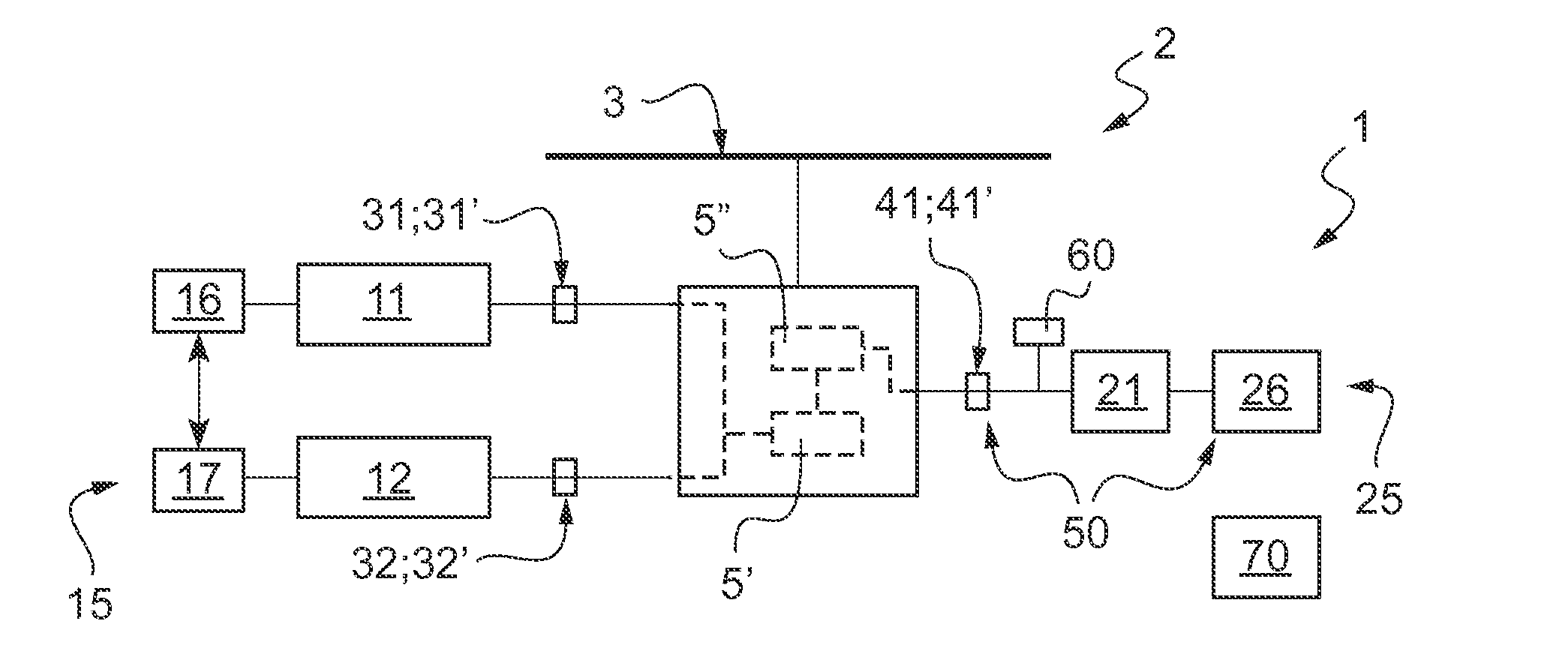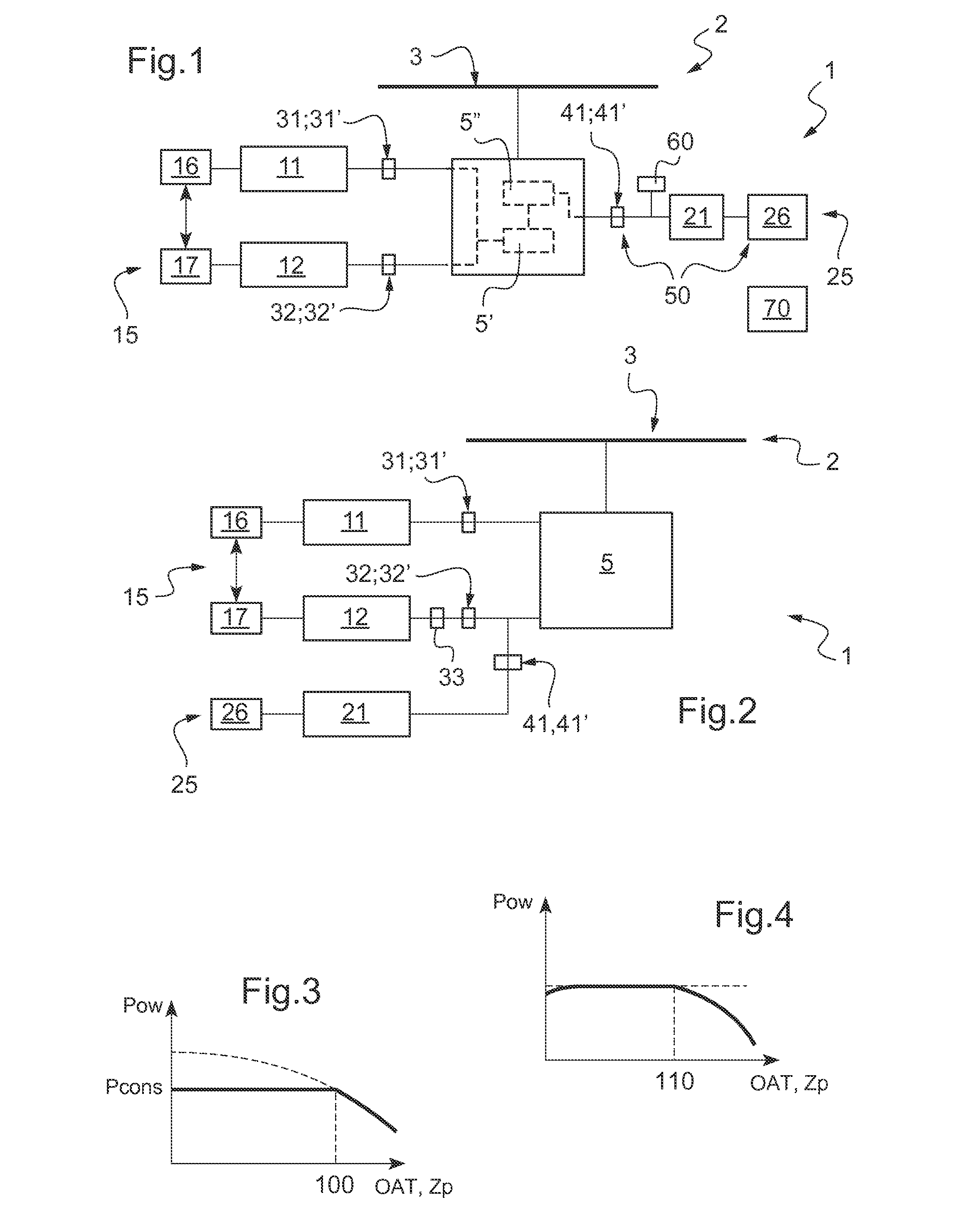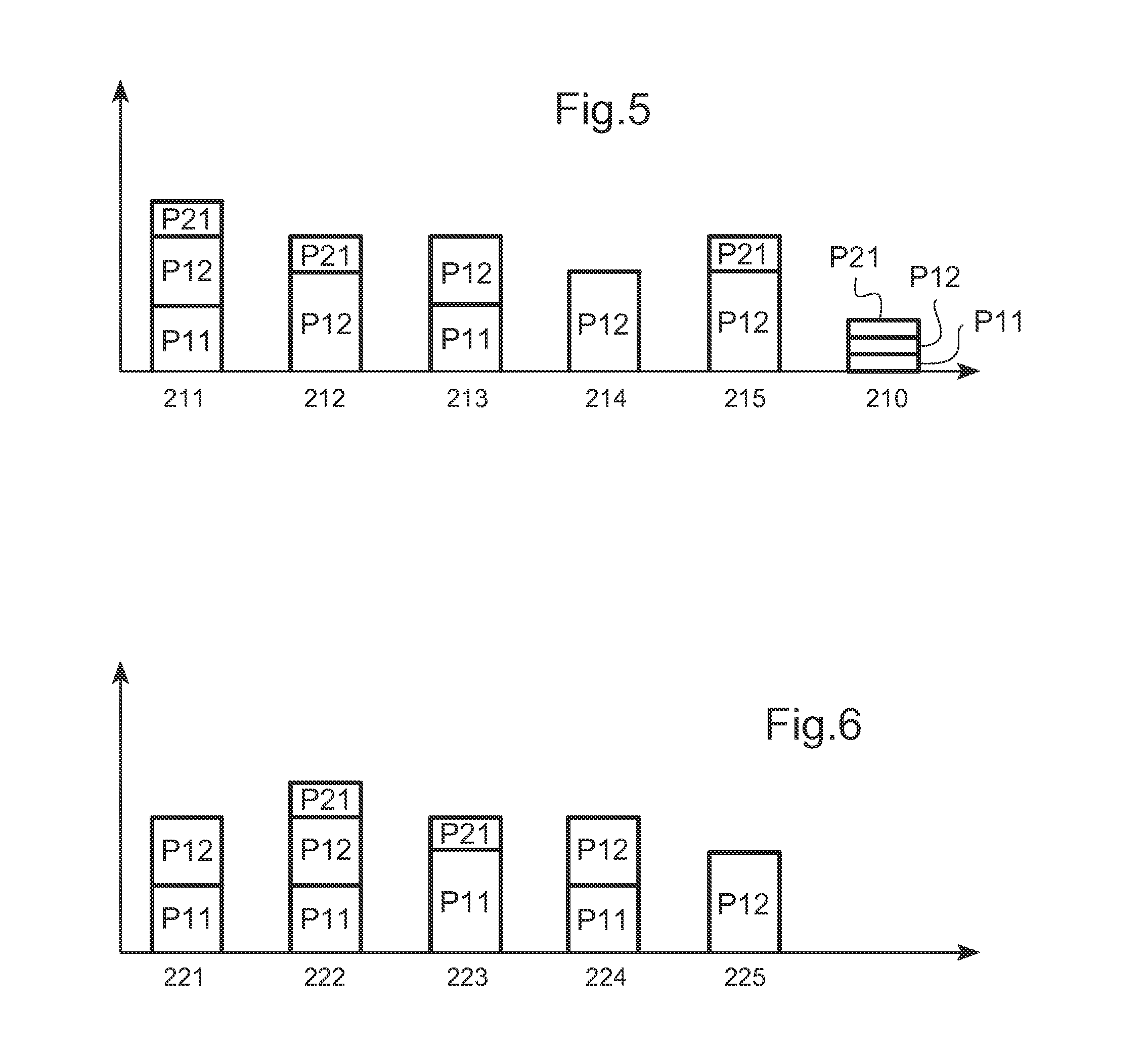Method and a rotary wing aircraft having three engines
a technology of rotary wing aircraft and engine, which is applied in the direction of rotorcraft, transportation and packaging, depending on the number of power plants, etc., can solve the problems of limited power that can be delivered by an engine, the power of the engine that was available, and the industrialization of any three-engined helicopter architectur
- Summary
- Abstract
- Description
- Claims
- Application Information
AI Technical Summary
Benefits of technology
Problems solved by technology
Method used
Image
Examples
first embodiment
[0201]In the first embodiment, the secondary engine 21 is dimensioned so as to develop low maximum power. This maximum power is said to be “low” insofar as this maximum power is not sufficient to lead to overspeed of the rotary wing 2 when the main engines are stopped or idling.
[0202]Under such circumstances, the secondary engine may be started on the ground without any risk of leading to overspeed of the rotary wing.
[0203]In a first situation 210, the secondary engine 21 and the main engines 11 and 12 are caused to operate on the ground in order to drive the rotary wing 2. Since the main engines are regulated in application of a setpoint that is variable, the main regulation system must guarantee that the main and secondary engines will not generate overspeed of the rotary wing.
[0204]It is possible for the main engines to develop zero power on the ground.
[0205]The secondary engine optionally has a specific free turbine mode of regulation on the ground that is dedicated to generatin...
second embodiment
[0216]In a second embodiment, the secondary engine 21 is dimensioned so as to develop high maximum power. This maximum power is said to be “high” insofar as this maximum power is sufficient to give rise to overspeed of the rotary wing 2 when the main engines are stopped or idling.
[0217]Under such circumstances, the main engines are operated on the ground to drive the rotary wing and the secondary engine is inhibited so long as the aircraft is flying at an altitude below a threshold altitude or whenever the rotary wing exceeds a threshold speed of rotation.
[0218]When the aircraft is flying at a forward slower than a threshold speed and at an altitude higher than a threshold altitude, the secondary engine is no longer inhibited.
[0219]With reference to FIG. 1, the aircraft 1 has detection means 70 for detecting whether the aircraft is standing on the ground. By way of example, the detection means 70 comprise a radioaltimeter or a sensor arranged on landing gear.
[0220]The aircraft 1 is ...
PUM
 Login to View More
Login to View More Abstract
Description
Claims
Application Information
 Login to View More
Login to View More - R&D
- Intellectual Property
- Life Sciences
- Materials
- Tech Scout
- Unparalleled Data Quality
- Higher Quality Content
- 60% Fewer Hallucinations
Browse by: Latest US Patents, China's latest patents, Technical Efficacy Thesaurus, Application Domain, Technology Topic, Popular Technical Reports.
© 2025 PatSnap. All rights reserved.Legal|Privacy policy|Modern Slavery Act Transparency Statement|Sitemap|About US| Contact US: help@patsnap.com



